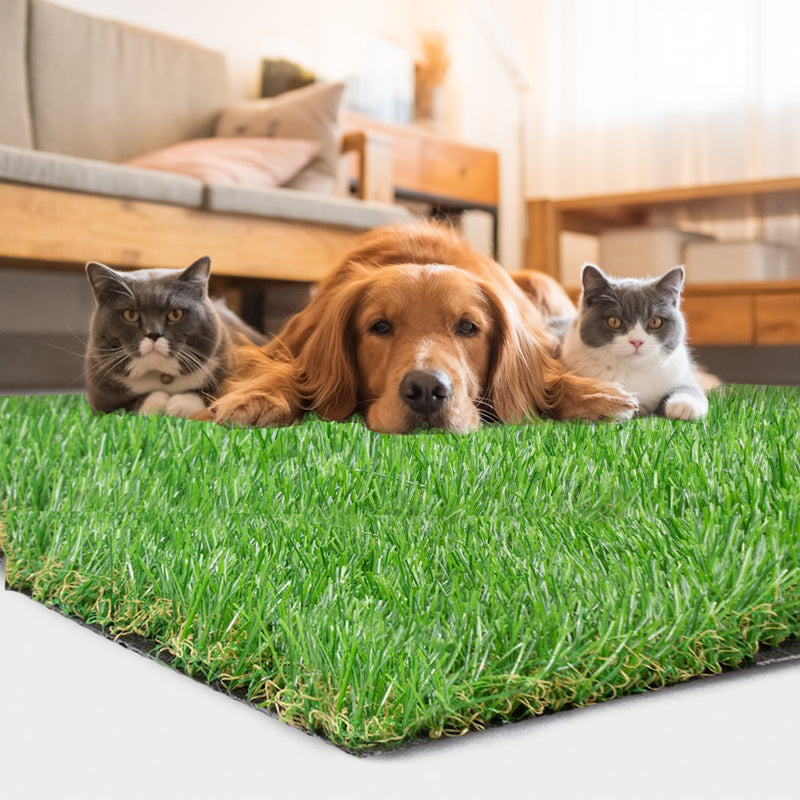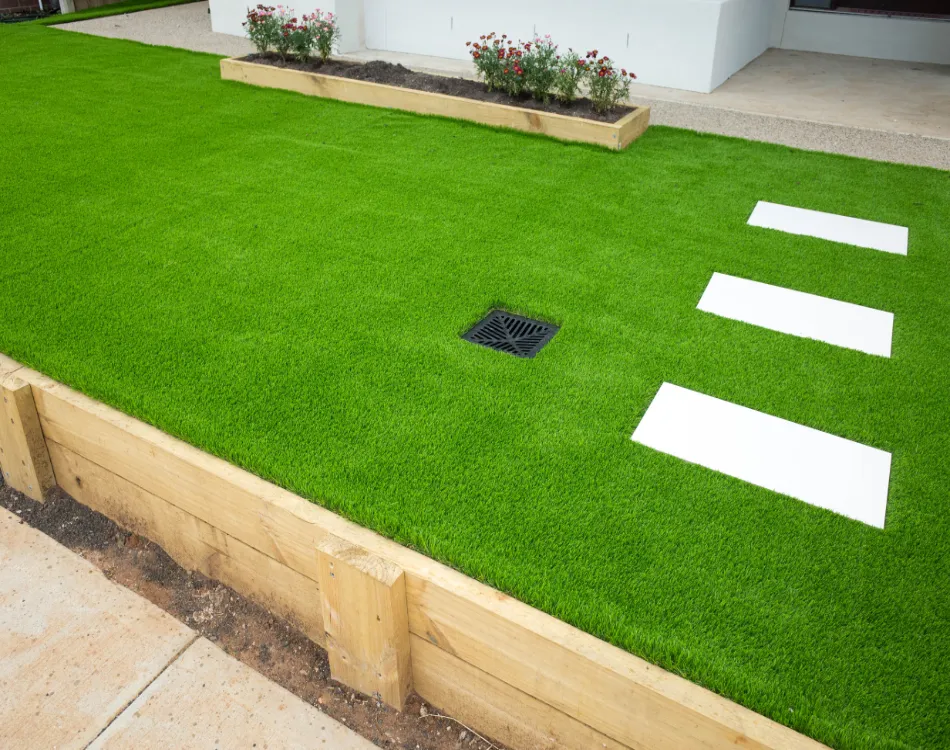Explore the Environmental Perks of Opting for Synthetic Grass Solutions
The adoption of fabricated lawn solutions presents a compelling opportunity to resolve pressing ecological difficulties. By substantially reducing water usage and reducing the application of harmful chemicals, these options not just promote sustainable landscape design yet likewise secure neighborhood ecosystems.
Water Preservation Perks
One of the most considerable benefits of fabricated lawn is its capacity to save water. In contrast, artificial lawn does not need watering, substantially reducing the general need for water sources.
By removing the requirement for normal watering, synthetic grass adds to sustainable landscape techniques and assists mitigate the environmental impact of excessive water consumption. Moreover, the conservation of water includes the reduction of drainage, which can bring about dirt erosion and river pollution.
Furthermore, the setup of synthetic turf enables municipalities and homeowners to allot water sources a lot more efficiently, focusing on essential usages such as drinking water and agriculture. The shift in the direction of artificial turf not just advertises accountable water usage but additionally straightens with more comprehensive environmental goals focused on maintaining natural deposits.
As communities significantly prioritize sustainability, the water preservation advantages of synthetic grass present a compelling case for its fostering in business and residential landscape design jobs.
Decreased Chemical Usage
The transition to fabricated grass dramatically reduces the reliance on chemical treatments typically made use of in natural lawn upkeep. Traditional lawn management typically involves the application of herbicides, fertilizers, and pesticides to promote growth and control insects. These chemicals can position risks to human health and wellness, local wild animals, and the environment, adding to soil and water contamination.
In contrast, synthetic lawn gets rid of the requirement for these hazardous materials. By minimizing the release of artificial compounds right into the ecosystem, synthetic lawn promotes healthier soil and water systems.
Additionally, the absence of chemical runoff connected with synthetic grass installments aids shield neighborhood rivers from contamination, sustaining water life and maintaining biodiversity. Arizona artificial turf. As areas progressively focus on lasting techniques, choosing man-made lawn presents a viable remedy that straightens with ecological conservation goals. With this shift, residential or commercial property proprietors can appreciate lavish eco-friendly rooms without compromising environmental wellness, leading the way for an extra lasting future
Reduced Carbon Impact

Moreover, the setup of fabricated grass can lead navigate to these guys to substantial water preservation. All-natural lawns call for considerable amounts of water for watering, which not only includes in the carbon impact connected with water extraction and therapy however also stress neighborhood water resources. On the other hand, man-made lawn needs very little upkeep, needing no watering, thereby significantly minimizing water usage and its connected power prices.
Additionally, the durability of synthetic grass contributes to its decreased carbon impact. With a life-span of approximately 15 years or more, the demand for regular replacements is lessened, resulting in less waste and reduced energy intake in production and disposing of conventional yard choices. In general, man-made grass provides a sustainable option for environmentally conscious landscaping.
Environment Preservation
Habitat preservation is a vital consideration in the debate over landscaping selections, particularly when contrasting synthetic turf to natural turf. Natural yard lawns often need considerable maintenance, including making use of chemicals, herbicides, and plant foods, which can negatively impact local ecological communities. These chemicals can seep into the dirt and waterways, hurting indigenous flora and animals and interrupting neighborhood habitats.
On the other hand, fabricated grass offers a possibility to decrease the eco-friendly footprint of landscaping. By choosing artificial turf, homeowners can minimize the disruption of all-natural environments connected with typical lawn treatment techniques. Synthetic grass eliminates the demand for damaging chemicals, thereby securing close-by wildlife and preserving the honesty of surrounding ecological communities. The installation of artificial lawn can lead to the conversion of previous grass areas into even more biodiverse landscapes, such as pollinator gardens or native plant areas, which can support regional wildlife.
Inevitably, the change to synthetic grass not only conserves water and lowers maintenance initiatives yet additionally check my site fosters a much more harmonious partnership between human activities and the natural surroundings, promoting environment conservation in the procedure.
Long-Term Sustainability
Long-lasting sustainability is an essential factor in assessing the benefits of fabricated grass over traditional turf yards. One of one of the most considerable benefits of synthetic grass is its resilience; it can last up to 15-20 years with marginal maintenance, whereas natural grass calls for regular reseeding and replacement. This durability reduces the demand for continuous sources, such as water, plant foods, and pesticides, which are important for keeping a healthy and balanced grass yard.
Furthermore, man-made turf adds to a reduction in carbon exhausts connected with yard care devices. Typical yards usually call for gas-powered mowers, trimmers, and blowers, all of which add to air contamination. Phoenix turf companies. On the other hand, synthetic grass gets rid of the need for such devices, promoting a cleaner environment
Furthermore, the manufacturing of synthetic grass increasingly makes use of recycled products, enhancing its sustainability profile. As producers adopt eco-friendly practices, the environmental footprint of artificial turf proceeds to reduce.

Final Thought
The adoption of synthetic grass options offers significant environmental advantages, including significant water conservation, decreased reliance on hazardous chemicals, and a lower carbon impact. Artificial turf help in protecting natural environments by decreasing land disruption and advertising lasting sustainability via the use of long lasting materials. Collectively, these elements highlight the potential YOURURL.com of synthetic grass to add favorably to environmental wellness and offer a practical choice to standard landscaping practices in a significantly resource-conscious globe.
In comparison, fabricated turf does not need watering, considerably reducing the overall demand for water sources. By decreasing the release of synthetic substances right into the ecological community, fabricated grass advertises healthier dirt and water systems.
In addition, the setup of artificial lawn can result in considerable water conservation. In comparison, fabricated lawn requires marginal upkeep, calling for no watering, thus significantly reducing water use and its linked energy costs.
